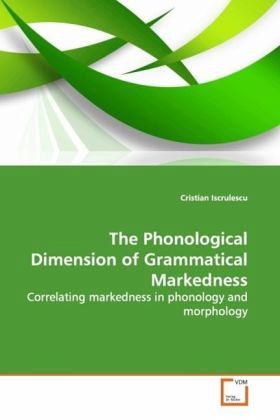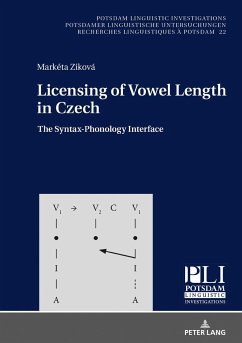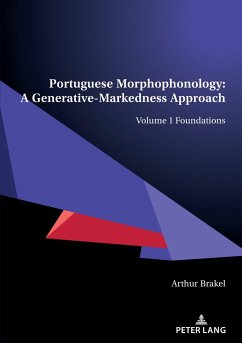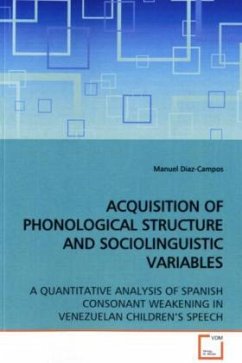
The Phonological Dimension of Grammatical Markedness
Correlating markedness in phonology and morphology
Versandkostenfrei!
Versandfertig in 6-10 Tagen
39,99 €
inkl. MwSt.

PAYBACK Punkte
20 °P sammeln!
In recent years, the phonology - morphology interface has been a topic of considerable interest in theoretical linguistics. This book represents a contribution to the study of this interface. Couched in the framework of Optimality Theory, it explores the correlation between grammatical markedness and the phonological properties of outputs inflected for morpho-syntactic categories on a grammatical markedness hierarchy. The main claim made in the book is that, under otherwise similar phonological conditions, outputs carrying specifications for a marked member of a given grammatical category can ...
In recent years, the phonology - morphology
interface has been a topic of considerable interest
in theoretical linguistics. This book represents a
contribution to the study of this interface. Couched
in the framework of Optimality Theory, it explores
the correlation between grammatical markedness and
the phonological properties of outputs inflected for
morpho-syntactic categories on a grammatical
markedness hierarchy. The main claim made in the
book is that, under otherwise similar phonological
conditions, outputs carrying specifications for a
marked member of a given grammatical category can
license a given type of marked phonological
structure to an extent that is equal or greater than
outputs inflected for the unmarked category.
Illustrations are provided for the morpho-syntactic
categories of case (Old Saxon), number (Romanian)
and voice (Mayak). The book is mainly intended for
theoretical linguists, researchers and graduate
students, but may also present interest for a larger
circle of readers.
interface has been a topic of considerable interest
in theoretical linguistics. This book represents a
contribution to the study of this interface. Couched
in the framework of Optimality Theory, it explores
the correlation between grammatical markedness and
the phonological properties of outputs inflected for
morpho-syntactic categories on a grammatical
markedness hierarchy. The main claim made in the
book is that, under otherwise similar phonological
conditions, outputs carrying specifications for a
marked member of a given grammatical category can
license a given type of marked phonological
structure to an extent that is equal or greater than
outputs inflected for the unmarked category.
Illustrations are provided for the morpho-syntactic
categories of case (Old Saxon), number (Romanian)
and voice (Mayak). The book is mainly intended for
theoretical linguists, researchers and graduate
students, but may also present interest for a larger
circle of readers.












